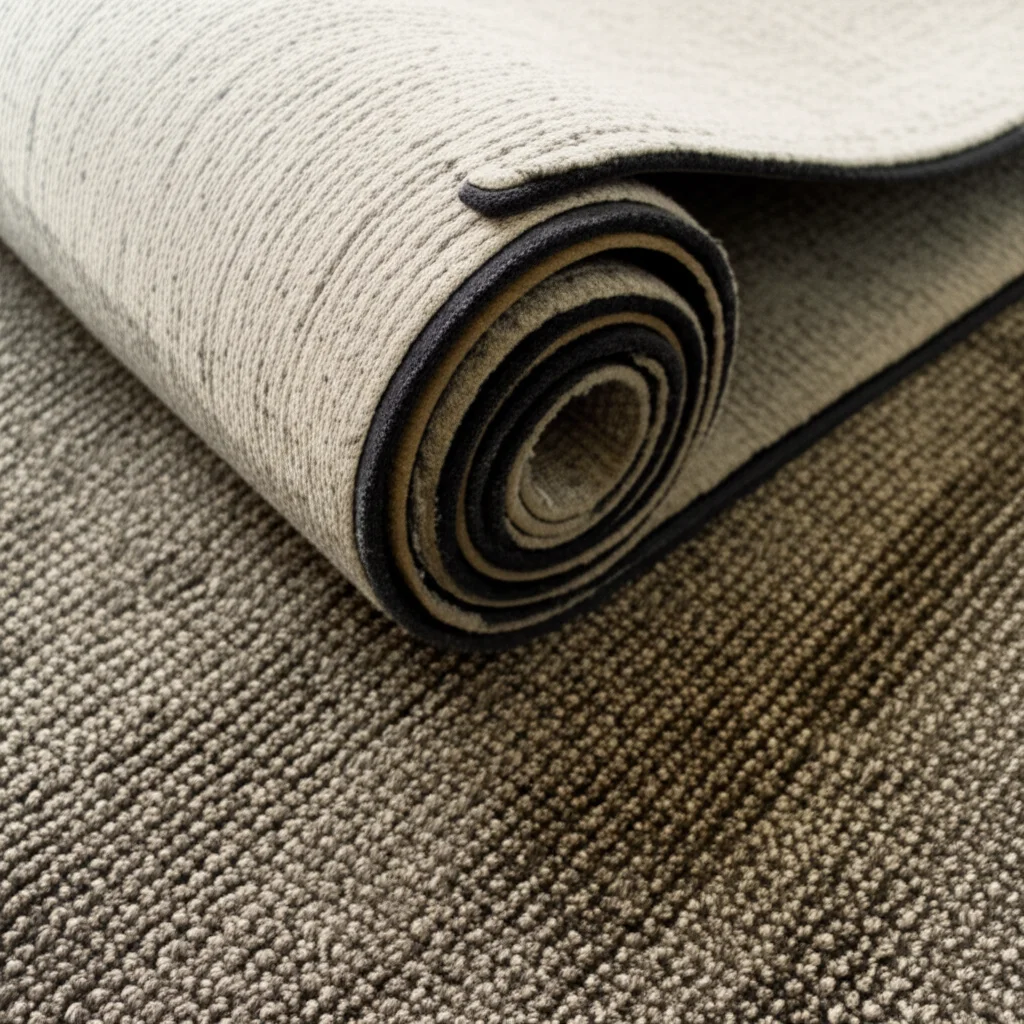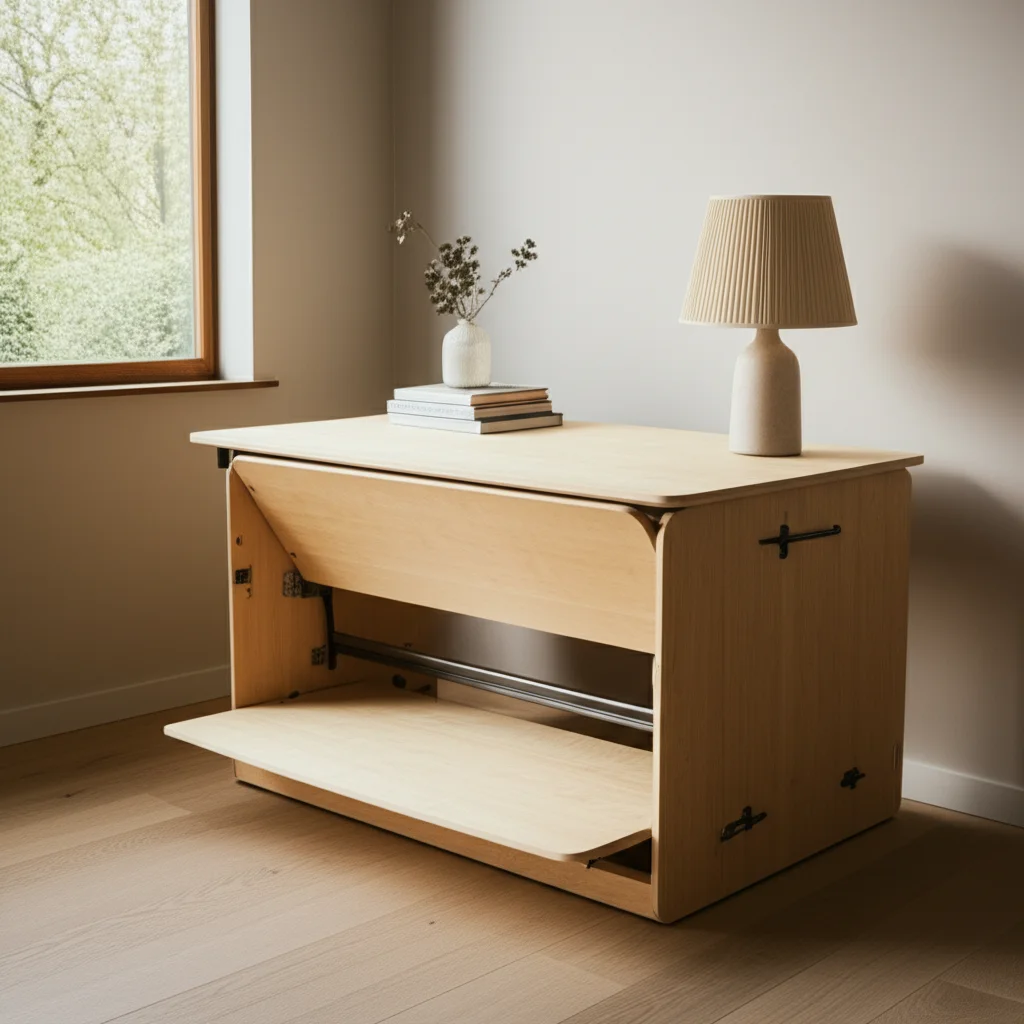· Todd Martin · Home Essentials · 22 min read
How Much Does Rubber Backed Carpet Weigh

Understanding the Weight of Rubber Backed Carpet: A Comprehensive Guide
Many people wonder, “how much does rubber backed carpet weigh?” This question is important for various reasons, from planning a DIY installation to estimating shipping costs. The weight of rubber backed carpet is not a fixed number. It varies significantly based on several factors, including the type of rubber used, the density of the carpet pile, and the overall size of the carpet. Knowing these details helps you make informed decisions when buying, moving, or cleaning your carpet. This guide explores the different elements that contribute to the total weight of rubber backed carpet, providing practical insights and calculations to help you understand this often-overlooked aspect of flooring. We will cover average weight ranges, the impact of moisture, and how weight affects handling and installation.
Takeaway
- Rubber backed carpet weight varies by type, typically ranging from 0.5 to 2 pounds per square foot.
- Factors influencing weight include rubber density, pile material, pile height, and carpet size.
- Moisture significantly increases weight, impacting cleaning and drying efforts.
- Accurate weight calculation helps with shipping, installation planning, and physical handling.
- Different rubber backing types offer various benefits beyond just weight, like durability and non-slip properties.
Rubber backed carpet typically weighs between 0.5 and 2 pounds per square foot. This range depends on the thickness and density of both the rubber backing and the carpet pile itself. Smaller mats are lighter, while large commercial rolls are much heavier. Always consider the total dimensions for an accurate weight estimate.
Decoding the Composition: What Makes Rubber Backed Carpet Heavy?
The core of a rubber backed carpet’s weight comes from its dual-layer construction. You have the carpet pile on top and the rubber layer underneath. Each component adds to the overall mass. The type of fiber used for the carpet pile, such as nylon, polyester, or olefin, has a specific density. Higher density fibers or taller piles mean more material, leading to a heavier carpet.
Then there is the rubber backing itself. Not all rubber backings are equal. Some are thin and lightweight, like those on small bath mats. Others are thick and dense, designed for heavy commercial use or outdoor applications. This variation in material and construction directly impacts the final weight of your carpet. We will explore these specific material differences in detail.
Types of Rubber Backing and Their Density
Rubber backing is a key feature of many carpets and rugs, providing stability and durability. However, the term “rubber” covers several materials, each with unique properties and densities. These differences directly affect the overall weight of the carpet. Understanding these variations helps you predict how much your carpet will weigh.
- Natural Rubber (Latex): This material comes from the sap of rubber trees. Natural rubber is often flexible and provides good grip. It can be quite dense, contributing a significant amount to the carpet’s weight. However, some people have latex allergies, which is a consideration for use in homes. Natural rubber is often used in higher-quality mats and rugs due to its resilience.
- Synthetic Rubber (SBR - Styrene Butadiene Rubber): SBR is a common type of synthetic rubber. Manufacturers create it from petroleum byproducts. It is very durable and resistant to abrasion. SBR is generally less expensive than natural rubber. Its density can vary, but it often makes the carpet quite heavy. This type of backing is common in commercial carpets and large area rugs because of its strength and cost-effectiveness.
- TPR (Thermoplastic Rubber): TPR is a blend of plastic and rubber. It offers good flexibility and slip resistance. TPR is often lighter than traditional natural or synthetic rubber. It is also recyclable, which makes it an environmentally friendly option. You might find TPR backing on bath mats or smaller rugs where a lighter weight is desirable for easy handling.
- Recycled Rubber: Some backings use recycled rubber, often from old tires. This material is very dense and durable. Carpets with recycled rubber backing tend to be quite heavy. This option is eco-friendly and provides excellent cushioning and insulation. It is a popular choice for outdoor mats or utility areas.
The thickness of the rubber layer also plays a big role. A thin layer of any rubber type will weigh less than a thick layer of the same material. For example, a commercial-grade carpet might have a very thick SBR backing for added stability and sound absorption, making it significantly heavier than a residential bath mat with a thin TPR backing. Consider the purpose of the carpet when thinking about the backing type and its weight contribution.
Beyond the Backing: Other Factors Influencing Carpet Weight
While the rubber backing is a major contributor, it is not the only element determining how much rubber backed carpet weighs. The carpet’s face fiber and construction also add significant mass. Think of it like a layered cake; each layer brings its own weight to the total. Understanding these elements gives you a clearer picture of carpet weight.
Carpet Pile Fiber Type and Density
The material and density of the carpet’s top layer, known as the pile, greatly influence its overall weight. Different fibers have different inherent weights and are packed at varying densities. This affects how much the carpet feels when you lift it.
- Nylon: Nylon is a popular synthetic fiber for carpets. It is known for its durability and resilience. Nylon fibers are relatively lightweight compared to natural fibers like wool. However, a dense nylon carpet can still be quite heavy due to the sheer volume of fiber. It resists crushing and matting well, maintaining its appearance over time.
- Polyester: Polyester fibers are soft and stain-resistant. They are generally heavier than nylon fibers. This means a polyester carpet of similar dimensions and pile height will likely weigh more than a nylon one. Polyester is often chosen for its luxurious feel and vibrant colors.
- Olefin (Polypropylene): Olefin is a lightweight, strong, and moisture-resistant fiber. It is often used for outdoor carpets or in basements because it resists mildew and fading. Due to its lighter weight, olefin carpets tend to be less heavy than those made of nylon or polyester, assuming similar construction. This makes it easier to handle and install.
- Wool: Wool is a natural fiber and is typically the heaviest of common carpet materials. Its dense, bulky nature means wool carpets, even with rubber backing, will have a substantial weight. Wool is prized for its softness, natural stain resistance, and insulation properties. However, its weight can make installation more challenging.
The density of the pile refers to how closely packed the fibers are. A high-density carpet has more fibers per square inch, making it heavier and more durable. Pile height also matters; a tall, plush carpet uses more fiber than a short, looped one, thus adding more weight. For example, a luxurious shag carpet will be much heavier than a low-pile office carpet, even if they have the same rubber backing.
Average Weight Ranges for Rubber-Backed Carpet Types
It is helpful to know general weight ranges for different types of rubber-backed carpets. This provides a baseline for your expectations. The weight varies widely depending on the carpet’s specific use and design. A small bath mat will clearly weigh much less than a large commercial roll of flooring.
Residential Rubber-Backed Area Rugs and Mats
Residential rubber-backed rugs and mats are common in many homes. They provide comfort, protect floors, and add decorative appeal. Their weight varies significantly based on size and pile.
- Bath Mats: These are usually small and have a thin rubber backing. They often weigh between 0.5 to 1.5 pounds for a standard size (e.g., 20x30 inches). Their light weight makes them easy to wash and move. You can learn more about how to wash these items by reading our guide on how to wash bathroom rugs with rubber backing.
- Kitchen Mats: Designed for high-traffic areas, kitchen mats often have slightly thicker rubber backing for durability and anti-fatigue properties. A typical kitchen mat (e.g., 2x3 feet) might weigh 2 to 5 pounds. The added thickness protects floors and provides comfort during long standing periods.
- Small Area Rugs (e.g., 3x5 feet): These rugs feature various pile heights and fiber types. They can weigh anywhere from 5 to 15 pounds. The heavier ones often have a dense pile or a more robust rubber backing. Their weight makes them stable on the floor, preventing slips.
- Large Area Rugs (e.g., 8x10 feet): These are substantial pieces of flooring. Their weight can range from 40 to over 100 pounds, depending on the pile and backing quality. Moving these requires significant effort, sometimes two people. If you need to clean a large one, understanding its weight is crucial for handling. Check out our guide on how to clean large rubber backed rugs for tips.
The variations within residential rugs are due to the diversity of materials and construction methods. A plush, high-pile rug with thick rubber will naturally be much heavier than a flat-weave mat with a minimal rubber coating. Always check product specifications for precise weight information when purchasing.
Commercial Rubber-Backed Carpet Tiles and Broadloom
Commercial settings demand highly durable flooring, and rubber-backed carpet often fits the bill. The weight of these products tends to be higher due to their robust construction. Commercial rubber-backed flooring comes in two main forms: tiles and broadloom.
- Commercial Carpet Tiles: These are individual squares designed for modular installation. They usually feature very dense rubber backing (often SBR) for stability, durability, and sound absorption. Each tile typically measures 24x24 inches or 50x50 cm. A single commercial carpet tile can weigh between 1 to 3 pounds. While one tile is manageable, a box of 10-20 tiles can easily weigh 20-60 pounds, making it heavy for transport. These tiles are excellent for high-traffic areas and allow for easy replacement of damaged sections.
- Commercial Broadloom Carpet: This refers to carpet sold in large rolls, typically 12 or 15 feet wide. Broadloom rubber-backed carpet is incredibly heavy. Its weight is often measured in ounces per square yard (oz/sq yd) for the pile, plus an additional weight for the rubber backing. A common commercial broadloom might weigh 60-100 oz/sq yd, translating to roughly 4-7 pounds per square foot or even more, depending on the backing thickness. A small section, like 10x12 feet, could easily weigh 400-800 pounds. This substantial weight makes commercial broadloom very stable and durable under heavy foot traffic. Moving and installing broadloom requires specialized equipment and multiple people.
The added weight in commercial rubber-backed carpets directly correlates with their enhanced performance. They offer superior wear resistance, dimensional stability, and often better acoustic properties. This makes them ideal for offices, retail spaces, schools, and healthcare facilities where durability and longevity are paramount. Always plan for significant weight when dealing with commercial rubber-backed carpet.
Calculating the Weight of Your Rubber-Backed Carpet
Estimating the weight of your rubber-backed carpet is essential for shipping, moving, or even just understanding the load on your floor structure. The calculation involves combining the carpet’s dimensions with its per-unit weight. You often find per-unit weight listed as ounces per square yard for the pile and a separate weight for the backing, or sometimes a combined total.
Practical Steps for Weight Estimation
To accurately estimate your carpet’s weight, follow these steps. It is a straightforward process that breaks down the carpet into manageable measurements. This helps you get a reliable figure for planning purposes.
- Find the Carpet’s Total Dimensions: Measure the length and width of your carpet or the area you intend to cover. If it is a roll of broadloom carpet, note its width and the length you need. For carpet tiles, count the number of tiles.
- Determine the Carpet’s “Face Weight”: This refers to the weight of the carpet fibers per square yard, usually measured in ounces. For example, a common residential carpet might have a face weight of 30-60 oz/sq yd. Commercial carpets can go much higher. This information is typically provided by the manufacturer or retailer.
- Determine the “Backing Weight”: The rubber backing also has a weight, often given in ounces per square yard or ounces per square foot. This figure can vary greatly based on the type and thickness of the rubber. For example, a heavy-duty SBR backing might add 30-50 oz/sq yd on its own.
- Calculate Total Weight per Square Yard (or Square Foot): Add the face weight and the backing weight. For example, if face weight is 40 oz/sq yd and backing is 30 oz/sq yd, the total is 70 oz/sq yd.
- Convert to Pounds per Square Yard (or Square Foot): Since 1 pound equals 16 ounces, divide the total ounces per square yard by 16. So, 70 oz/sq yd / 16 oz/lb = 4.375 lbs/sq yd. If you have weight per square foot, divide by 16 directly.
- Calculate the Total Square Yards (or Square Feet) of Your Carpet:
- For a rectangular carpet: Length (feet) x Width (feet) = Total Square Feet.
- Then, Total Square Feet / 9 = Total Square Yards.
- Multiply to Get Total Carpet Weight: Total Square Yards (or Feet) x Weight per Square Yard (or Foot) = Total Carpet Weight in Pounds.
Example Calculation: You have a rubber-backed carpet that is 10 feet wide and 15 feet long.
- Total Square Feet = 10 ft * 15 ft = 150 sq ft.
- Total Square Yards = 150 sq ft / 9 sq ft/yd = 16.67 sq yards.
- Assume the carpet has a face weight of 45 oz/sq yd and a rubber backing weight of 35 oz/sq yd.
- Total weight per square yard = 45 oz + 35 oz = 80 oz/sq yd.
- Convert to pounds per square yard = 80 oz / 16 oz/lb = 5 lbs/sq yd.
- Total Carpet Weight = 16.67 sq yards * 5 lbs/sq yd = 83.35 pounds.
This methodical approach helps ensure you arrive at a fairly accurate weight. Always factor in any potential packaging weight if you are shipping the carpet.
Why Does Knowing Carpet Weight Matter? Practical Implications
Understanding how much rubber backed carpet weighs goes beyond mere curiosity. This knowledge has practical implications for various aspects, from logistics to everyday use. Knowing the weight helps you plan better and avoid unexpected challenges. It affects your budget, your back, and even the structural integrity of your space.
Shipping, Installation, and Handling Logistics
The weight of rubber backed carpet directly impacts the logistics of its shipping, installation, and overall handling. Heavier carpets present more challenges but also offer specific benefits.
- Shipping Costs: Freight companies base shipping costs largely on weight and dimensions. A heavier rubber-backed carpet will incur higher shipping fees. For large orders, these costs can add up quickly. This is crucial for businesses purchasing in bulk or for individuals ordering custom-sized broadloom carpet. Always get a shipping quote based on the estimated weight before finalizing your purchase.
- Installation Effort: Heavier carpets are more difficult to carry and maneuver. Installing broadloom rubber-backed carpet often requires a team of installers and specialized equipment like carpet dollies or power stretchers. The sheer mass makes it harder to cut and position accurately. However, once installed, heavy carpet lays flatter and is less prone to shifting or buckling. This stability is a key advantage in high-traffic commercial spaces.
- Handling and Moving: If you need to move a large rubber-backed rug or broadloom carpet, its weight will be a significant factor. A small area rug might be a one-person job. A large rug (8x10 feet or more) will likely require two or more people. This is especially true for commercial-grade carpets which are much denser. For example, replacing old car carpet with rubber matting involves significant lifting and maneuvering, similar to handling other heavy carpets. Our guide on how to replace carpet in 2002 Suburban with rubber matting provides insights into such tasks.
- Structural Load: For very large areas or multi-story buildings, the combined weight of heavy rubber-backed carpet can add a substantial load to the floor structure. While typically not an issue for residential use, commercial buildings or warehouses might need to consider this factor in their structural calculations. Always consult with a professional if you have concerns about floor loading capacity.
Considering the weight helps you budget accurately for delivery and installation, ensures you have enough help, and allows for proper planning of the physical work involved.
The Role of Moisture: Wet vs. Dry Carpet Weight
One often-overlooked factor that dramatically impacts carpet weight is moisture. Rubber backing, while water-resistant, does not mean the carpet pile itself is impermeable. When carpets absorb water, their weight can increase by a staggering amount. This has critical implications, especially when cleaning or drying.
Water Absorption and its Impact
Most carpet fibers are designed to absorb some amount of liquid. This absorption significantly increases the carpet’s weight. Imagine a sponge; dry it is light, but wet it becomes heavy. Carpets work similarly.
- Weight Increase: The total weight of a rubber-backed carpet can double or even triple when fully saturated with water. For example, a dry 10-pound bath mat could easily weigh 20-30 pounds when wet. A large area rug or broadloom carpet that weighs 50 pounds dry might become 100-150 pounds or more when wet. This massive increase makes wet carpets incredibly difficult to lift, move, and dry.
- Cleaning Challenges: When cleaning rubber-backed rugs, this weight increase is a major consideration. If you’re washing a large rubber-backed rug or even a smaller bath mat, you must account for its wet weight. You might struggle to lift it out of a bathtub or washing machine. Attempting to lift overly heavy wet carpets can cause personal injury or damage to the carpet itself. Always ensure you have sufficient help or use appropriate tools. We have guides like how to wash bathroom rugs with rubber backing that discuss this.
- Drying Time and Strategy: The increased weight also means a longer drying time. Water trapped within the fibers and backing needs to evaporate. If a wet rubber-backed carpet is not dried thoroughly and quickly, it can develop mildew or unpleasant odors. The rubber backing can trap moisture against the floor, leading to problems. It is crucial to get the carpet as dry as possible, either by hanging it or using fans. Our article on how to dry bathroom rugs with rubber backing provides detailed drying strategies.
- Risk of Damage: The added weight of water can stress the carpet’s construction. For older or weaker rubber backings, repeated saturation and heavy lifting might cause the backing to crack or deteriorate more quickly. This is particularly true if the carpet is dragged or mishandled while wet.
Always approach wet rubber-backed carpets with caution. Plan for the increased weight by having help available, using appropriate lifting techniques, and ensuring a comprehensive drying process. Proper handling helps maintain the carpet’s integrity and prevents issues like mildew.
Comparing Rubber Backing to Other Carpet Backings
Rubber backing is popular for its non-slip and durable qualities. However, it is not the only type of carpet backing available. Each backing material offers different properties, including distinct weight characteristics. Understanding these differences helps you appreciate why rubber-backed carpet weighs what it does.
Other Common Carpet Backing Types
Carpets feature various backing materials beyond rubber, each with its own benefits and weight profiles. These choices impact carpet performance and handling.
- Felt Backing: Felt backing is typically made from recycled materials, often synthetic fibers. It is much lighter than rubber backing. Felt backing provides good insulation and softness underfoot. It is commonly used for residential carpets where a softer feel and easier installation are priorities. However, felt-backed carpets generally offer less slip resistance than rubber-backed ones. If you are dealing with felt-backed carpet tiles, securing them properly is key. We have information on how to secure felt backed carpet tiles.
- Jute Backing: Jute is a natural fiber derived from plants. It is a traditional and environmentally friendly backing material. Jute backing is relatively lightweight compared to dense rubber but heavier than felt. It provides good dimensional stability. However, jute can be susceptible to moisture damage and may become brittle over time. It is often found in woven area rugs.
- Action Back (Polypropylene Woven Backing): Action back is a very common synthetic backing. It consists of a woven polypropylene material that is often laminated with a layer of latex. This backing is relatively lightweight and provides good stability. It is durable and commonly used for residential broadloom carpets. While it uses some latex, it is generally not as heavy or as non-slip as a full rubber backing.
- Polyurethane (PU) Foam Backing: This type of backing integrates the carpet padding directly into the carpet. It offers excellent cushioning and insulation. PU foam backing can vary in density, affecting its weight. It is generally lighter than solid rubber but heavier than felt or basic action back. It makes carpet softer underfoot but can be prone to breaking down over many years. This integrated padding also means you do not need a separate underlay.
Each backing type suits different needs. Rubber backing provides superior grip and durability, which often comes with increased weight. Other backings offer alternatives for specific aesthetic, comfort, or budget requirements, usually at a lighter weight.
Weight Considerations for Specific Applications
The choice of rubber-backed carpet, and thus its weight, is often dictated by its intended application. A gym floor, for instance, needs a much heavier, more robust carpet than a bedroom. Understanding these specific uses helps clarify why certain weight profiles are preferred.
Gyms, Offices, Homes, and Vehicles
The demands of different environments shape the ideal weight and construction of rubber-backed carpet. Weight becomes a functional feature.
- Gyms and Fitness Centers: These environments require extremely durable and shock-absorbent flooring. Rubber-backed carpet in gyms is typically very heavy, often featuring dense, recycled rubber backing. This weight provides stability for heavy equipment, absorbs impact from dropped weights, and reduces noise. The high density contributes significantly to its substantial weight per square foot. It also means the carpet stays put, even under intense activity.
- Offices and Commercial Spaces: In offices, lobbies, and retail environments, rubber-backed carpet tiles are common. Their weight contributes to dimensional stability, preventing buckling and shifting under heavy foot traffic and rolling chairs. While not as heavy as gym flooring, commercial carpet tiles are still significantly denser than residential options. Their weight helps with sound absorption and longevity, standing up to daily wear and tear.
- Homes: Residential rubber-backed carpets are often found as area rugs, runners, and bath mats. Their weight is a balance between stability and ease of handling. A heavier rubber backing on a large area rug prevents it from slipping and bunching, which is a safety feature. For smaller items like bath mats, a lighter rubber backing makes them easier to wash and move. The weight makes the home feel more grounded.
- Vehicles (Car Carpet): Car carpet often features a thin, flexible rubber or latex backing. This backing adds some weight but is primarily there to provide stability and resist moisture. The overall weight of car carpet is generally lower than household broadloom, as excessive weight would reduce fuel efficiency. However, the rubber backing still contributes significantly to the total weight of the carpet section in a vehicle. Knowing what car carpet is made of can help you understand its characteristics, and our guide on how to clean car carpet can assist with maintenance that might involve handling the carpet’s weight.
The weight of rubber-backed carpet is not just a side effect of its materials; it is a design choice that serves a purpose. From stability in a gym to ease of washing a bath mat, weight is a key characteristic defining the carpet’s suitability for its application.
Maximizing Longevity: Care and Maintenance for Rubber-Backed Carpet
Proper care helps extend the life of your rubber-backed carpet, regardless of its weight. Understanding how its unique construction affects cleaning and maintenance is important. While the weight itself doesn’t change, how you care for it does.
Best Practices for Cleaning and Drying
Cleaning and drying rubber-backed carpets require specific attention due to their unique properties and often significant weight when wet. Incorrect methods can damage the backing or lead to mold growth.
- Regular Vacuuming: For everyday maintenance, regular vacuuming is essential. This removes loose dirt and debris, preventing it from embedding into the fibers. Ensure your vacuum has adjustable height settings to accommodate different pile heights without damaging the rubber backing. Frequent vacuuming keeps the carpet looking fresh and prevents dirt buildup, which can add to its perceived weight.
- Spot Cleaning: For spills and stains, prompt spot cleaning is critical. Use mild cleaning solutions and blot, do not rub, the affected area. Avoid oversaturating the carpet, especially near the rubber backing, as excess moisture can be difficult to dry and may degrade the rubber over time. Our guide on how to clean spots on carpet provides detailed methods for various stains.
- Washing Large Rugs: For larger rubber-backed rugs, professional cleaning is often recommended due to their weight when wet and the need for specialized drying equipment. If you choose to wash at home, follow manufacturer guidelines. Use cold water and gentle detergents. For very large rugs, a carpet cleaner machine might be useful, but ensure it does not over-saturate. Remember, the wet weight will be substantial, so plan for assistance when moving it. Our comprehensive guide on how to clean large rubber backed rugs offers detailed instructions.
- Thorough Drying is Key: This is perhaps the most crucial step for rubber-backed carpets. Because the rubber backing is impermeable, it can trap moisture against the floor or within the carpet layers. After any wet cleaning, ensure the carpet dries completely and quickly.
- Air Circulation: Use fans, open windows, or dehumidifiers to promote airflow.
- Elevate the Carpet: If possible, elevate the carpet off the floor to allow air to circulate underneath.
- Hang if Possible: For smaller rugs, hanging them over a railing or drying rack is ideal for optimal airflow. This helps the carpet dry evenly from all sides. Learn more about effective drying methods in our article on how to dry bathroom rugs with rubber backing.
- Avoiding Harsh Chemicals: Harsh chemicals can damage both the carpet fibers and the rubber backing. They can cause the rubber to become brittle, crack, or lose its non-slip properties. Always use cleaning products specifically designed for carpets and test them in an inconspicuous area first.
By following these care instructions, you can maintain the appearance and functionality of your rubber-backed carpet for years. Proper drying is especially vital to prevent issues related to moisture entrapment.
Frequently Asked Questions About Rubber-Backed Carpet Weight
Q1: Does the type of rubber backing significantly affect the carpet’s total weight?
A1: Yes, the type of rubber backing greatly affects the total carpet weight. Natural rubber (latex) and synthetic rubber (SBR) are generally denser and heavier than thermoplastic rubber (TPR) or thin foam backings. Thicker rubber layers also add more weight. This choice is usually made based on the carpet’s intended use and durability requirements.





